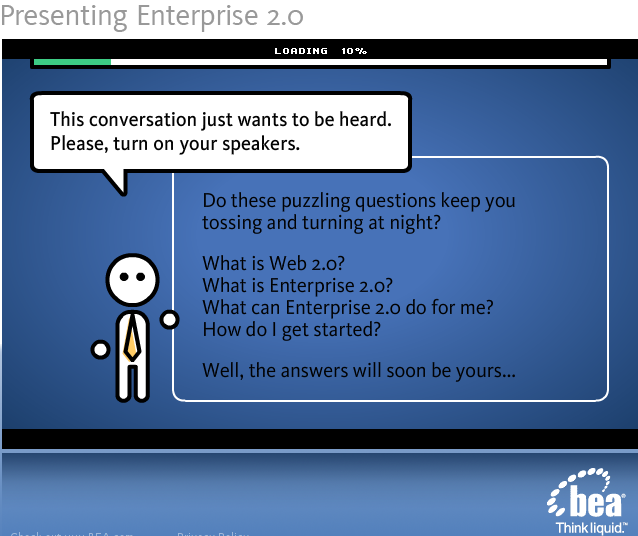Im Vorfeld der Web 2.0 Expo Europe in Berlin werden viele verschiedene Interviews mit den Protagonisten der Konferenz geführt. Speziell auf der Web 2.0 Expo in New York hat Ulrike zuletzt ein Interview mit Jen Pahlka vom Co-Konferenzorganisator Techweb geführt. U.a. wurde diskutiert, warum es dieses Jahr wieder nach Berlin geht.
Video ist courtesy of Johannes (mit dem ich mich interessanterweise beim BarCamp Stuttgart darüber unterhalten habe), und der zusammen mit den anderen Bloggern der Berlinblase die Expo wieder unter die Lupe nehmen wird. Einig waren wir uns jedenfalls, dass O’Reilly und Techweb ernsthaft und glaubwürdig an diesen neuen Anlauf gehen und wir daher mit einer guten Grundstimmung an die Sache gehen sollten. Er schreibt:
Insgesamt kommt klar das Gefühl rüber, dass die Kritikpunkte vom letzten Jahr mehr als deutlich gehört wurde und man alles dran gesetzt hat, es dieses Jahr besser zu machen.

Um nun die Masse an Vorträgen, Workshops, Keynotes etc. zu organisieren bietet es sich zum einen an ein persönliches Programm zusammenzustellen, zudem sollte man das konferenzeigene Social Network (auf Basis von Crowdvine) nutzen. Anders als letztes Jahr ist es dieses Mal rechtzeitig am Start. Und um sich in der Vielzahl der Besucher zu finden bietet es sich einfach an – neben der Benutzung der üblichen Verdächtigen wie Twitter und Co. – dieses spezialisierte Social Network zu benutzen. Auch wenn ich ja ungern dutzende von Freunde, Bekannten und Kollegen von Hand dazufüge, ist es zumindest eine gute Eigenschaft von Crowdvine, dass die Beziehungen in friend, fan und “want to meet” differenziert werden können.
Nun ja, wer nun noch Lust auf eine intensive Berlin Web Week verspürt kann sich mit meinem Promo-Code immerhin 35% Nachlass verschaffen. Bei der Registrierung also den Code webeu08gr17 eingeben …


